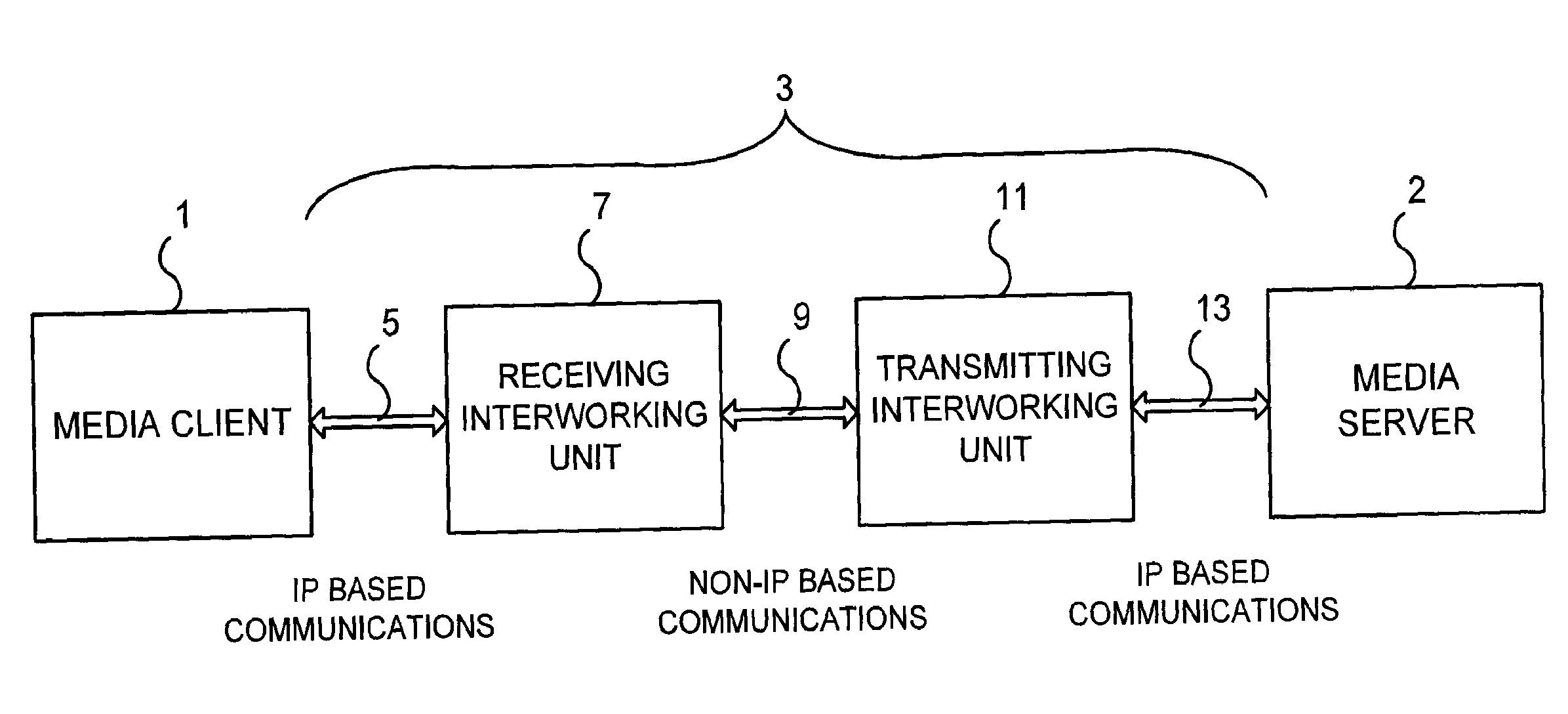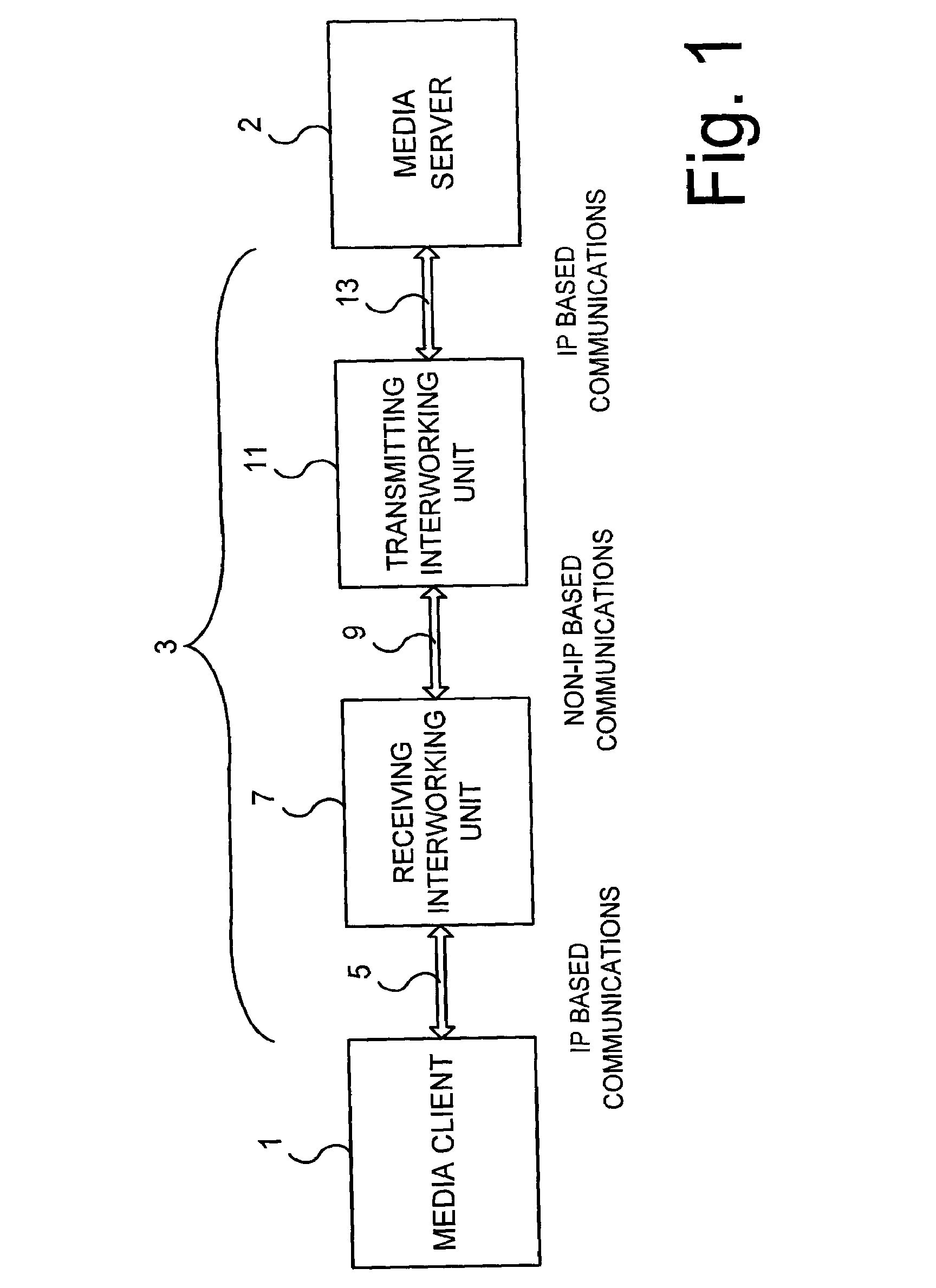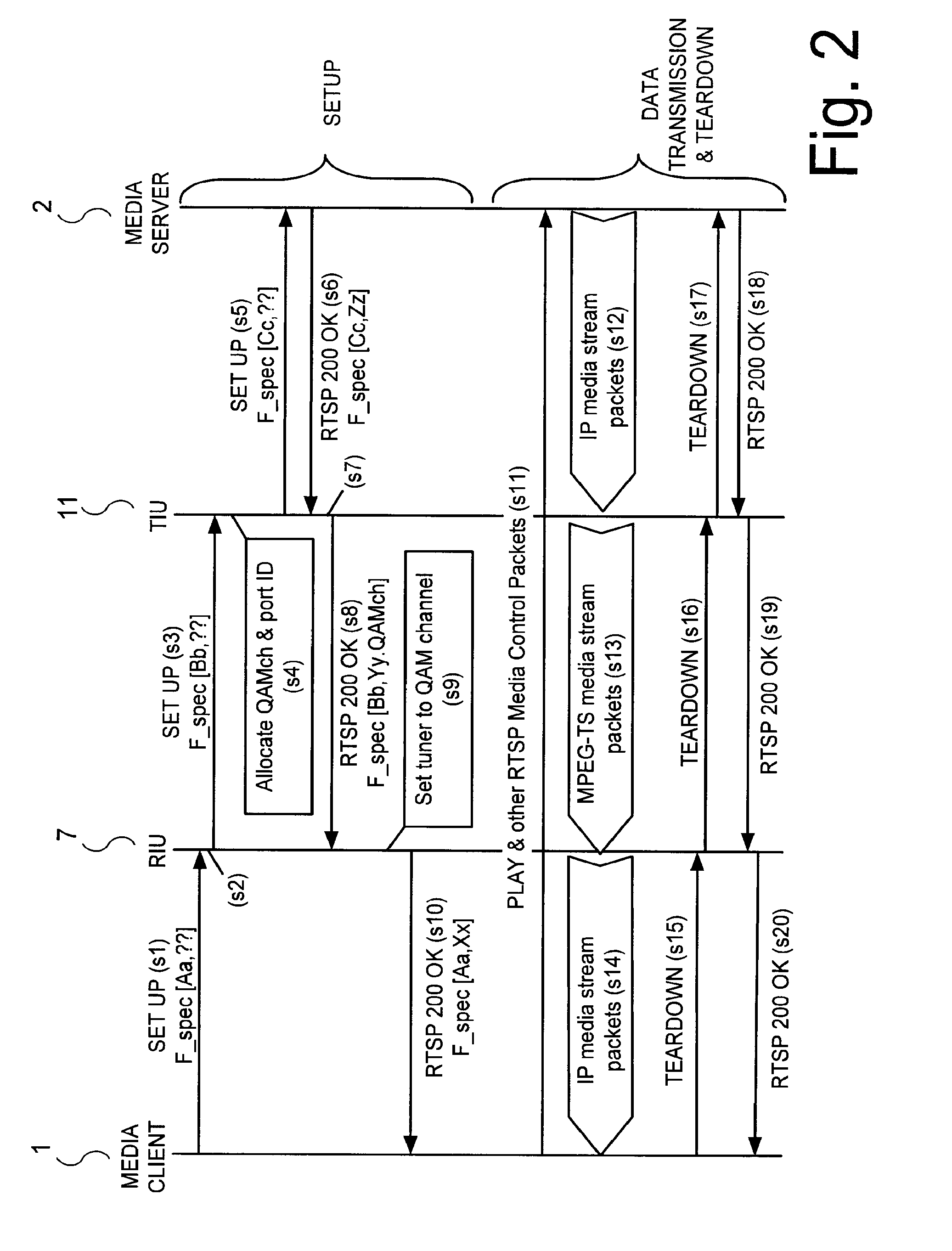Mechanism to divert an IP flow over a non-IP transport
a technology of ip flow and non-ip transport, applied in the field of communication networks, can solve the problems of insufficient bandwidth in the 1p docsis transport to support the number of viewers, first mile, and approach incur considerable cost, so as to facilitate media clients, reduce the cost of migrating, and facilitate the effect of media client data transpor
- Summary
- Abstract
- Description
- Claims
- Application Information
AI Technical Summary
Benefits of technology
Problems solved by technology
Method used
Image
Examples
Embodiment Construction
[0019]FIG. 1 is a schematic block diagram of a communications network in accordance with an embodiment of the present invention. Referring to FIG. 1, a media client 1 is connected to a media server 2 via a communications network 3. The media server 2 could be a media gateway (MG), and a media gateway control function (MGCF) and the network addresses of the signaling endpoints (the Control Point) and the MGCF need not be the same as the network addresses of the source and destination of the media stream.
[0020]Typically, the media client 1 will comprise a set-top box (STB) connected to a rendering device. When MPEG media streams are transported to the media client 1, the MPEG media streams are decrypted and decoded and then rendered over an interface such as a High-Definition Multimedia Interface (HDMI) to be displayed on a digital TV. In addition to providing this decryption and decoding function, the media client 1 also is a control point that signals to the media server 2 via the c...
PUM
 Login to View More
Login to View More Abstract
Description
Claims
Application Information
 Login to View More
Login to View More - R&D
- Intellectual Property
- Life Sciences
- Materials
- Tech Scout
- Unparalleled Data Quality
- Higher Quality Content
- 60% Fewer Hallucinations
Browse by: Latest US Patents, China's latest patents, Technical Efficacy Thesaurus, Application Domain, Technology Topic, Popular Technical Reports.
© 2025 PatSnap. All rights reserved.Legal|Privacy policy|Modern Slavery Act Transparency Statement|Sitemap|About US| Contact US: help@patsnap.com



